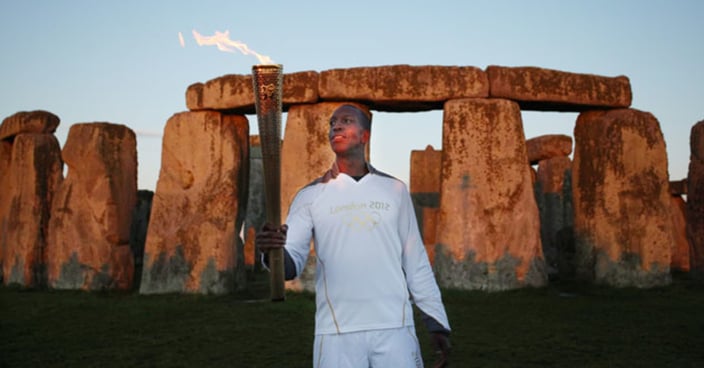Stonehenge was built in bid to host ancient Olympics say top archaeologists.
The ancient sight was built as a "giant sundial stopwatch" but ultimately failed in its objective to host ancient games.
NEWS


MYSTERY SOLVED: Ancient stone circle was a giant stopwatch (Ned Buggles/Rhomboid)
Top archaeology boffins at University College Borehamwood have found that Stonehenge was built as a sporting venue in a bid to attract the ancient Olympic Games to neolithic England. Professor Angela Squatsby from the Hertfordshire uni’s Department of Archaeological Studies made the surprising discovery while excavating the legendary site, which included ancient shot-puts, gymnastic equipment, and running hurdles.
Professor Squatsby makes a further claim that the structure of Stonehenge was intended as a primitive stopwatch with which to time ancient 100m sprints. “It used what was, for the time period, cutting edge sun-dial technology,” said the Professor amidst the ruins of the mysterious stone circle. “With a giant pole in the centre, one could accurately record times down to a hundredth of a second, which was more than adequate for recording world records in ancient times.”
Despite the immense effort the ancient Britons put into hosting the games, the Olympics never came to the Wiltshire countryside.
“My best guess is that, as with the modern Olympics, there was a lot of corruption involved with the ancient bidding process. How could a tiny nation on the edge of Europe hope to compete with the Greek city states?” said Squatsby.


The University College Borehamwood team are now calling on English Heritage and the National Trust for permission to dig in the surrounding countryside in search of the stadium which would have accompanied the giant stone stopwatch. The Culture Minister, Nadine Dorries, is particularly keen for the scheme to go ahead, arguing the opportunities for tourism could be immense for “what is, let’s face it, quite a boring venue in its current form.”
Squatsby’s colleague, Professor Kelvin Knox, himself an expert on the modern Olympics, thinks these discoveries should change the way we think about the monumental stone circle. “Currently it’s a magnet for awful crusties who treat the site like it’s an alternative Creamfields Festival. The evidence is now clear there were no druids frolicking naked amongst the stones, offering libations to the fertility gods and defiling the area with an awful neolithic form of dogging. Instead, we have to think of Stonehenge as a sight of immense cultural importance as a precursor to the London 2012 Olympics.”
With these new discoveries, it is now certain that Stonehenge will be put on the map as a place of deep sporting significance.


